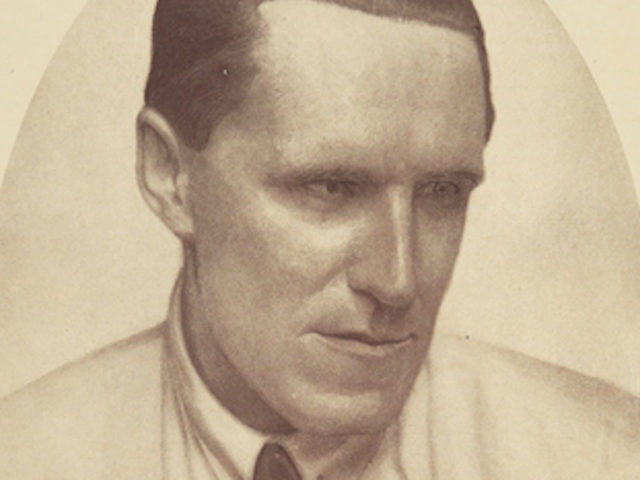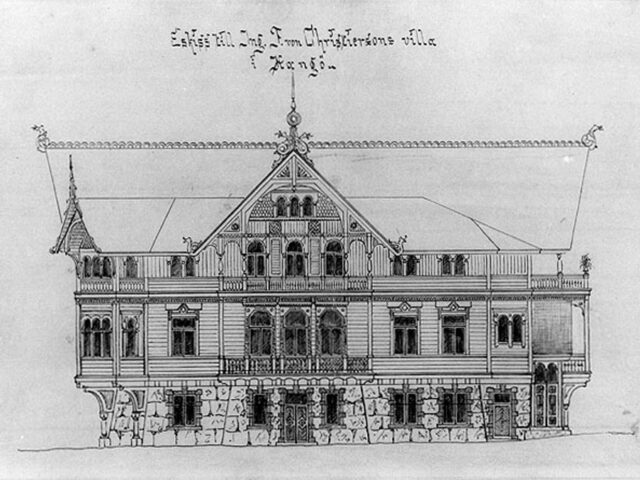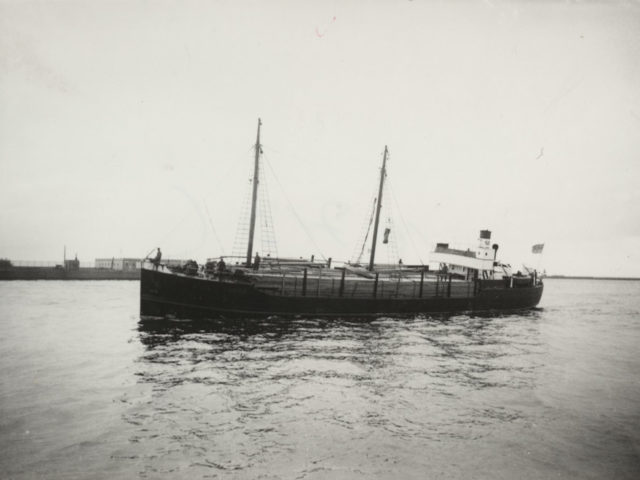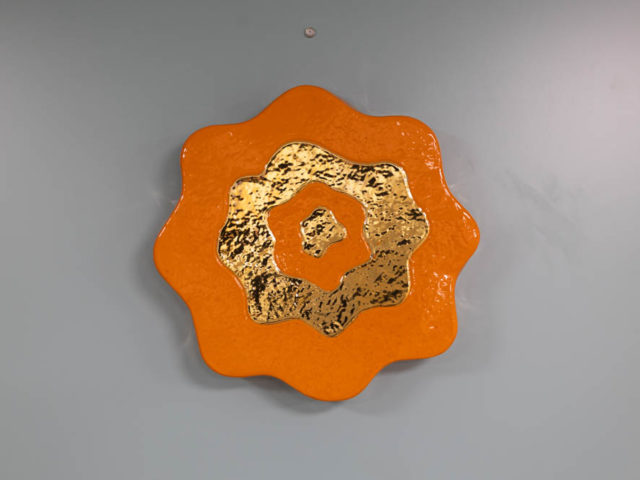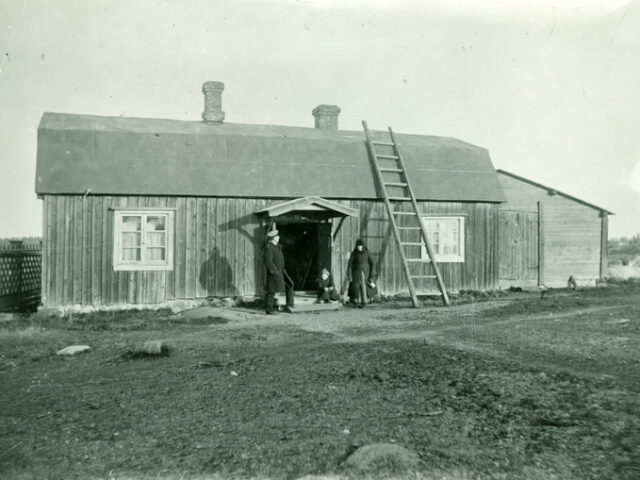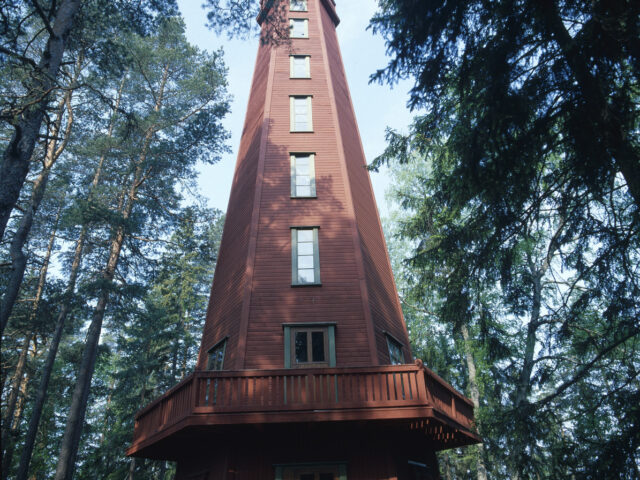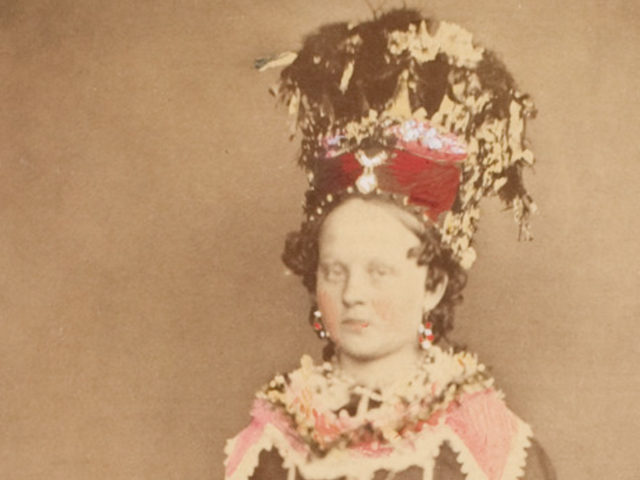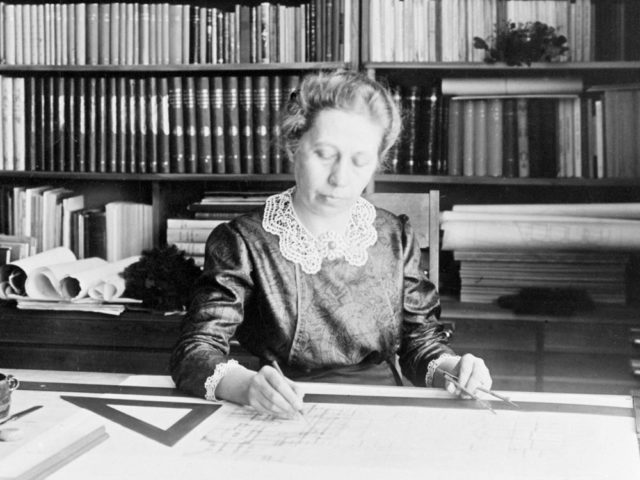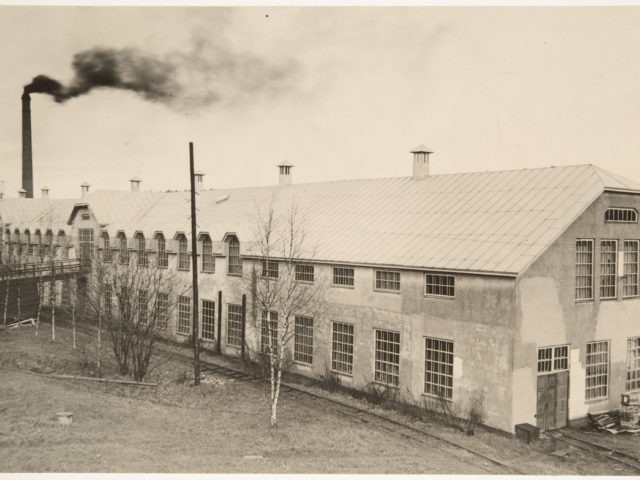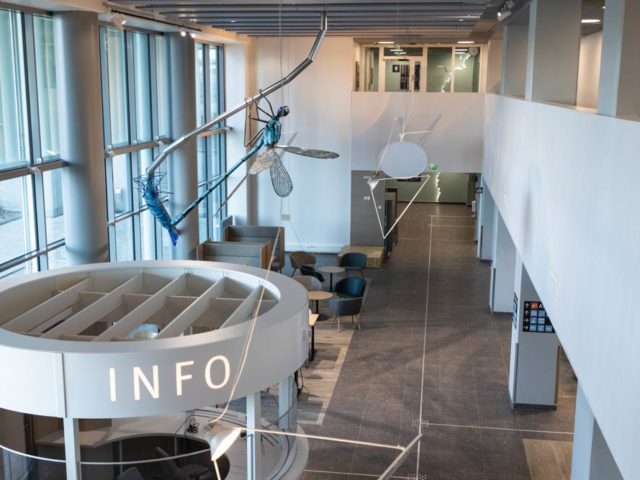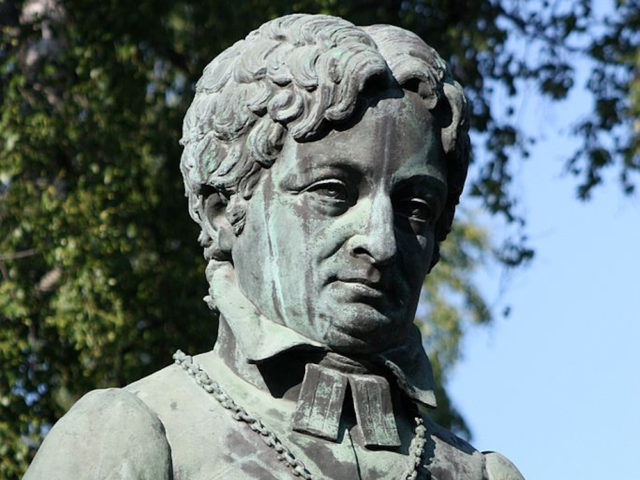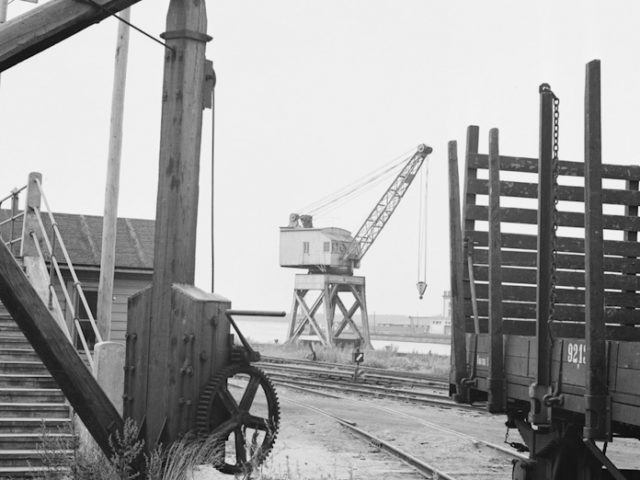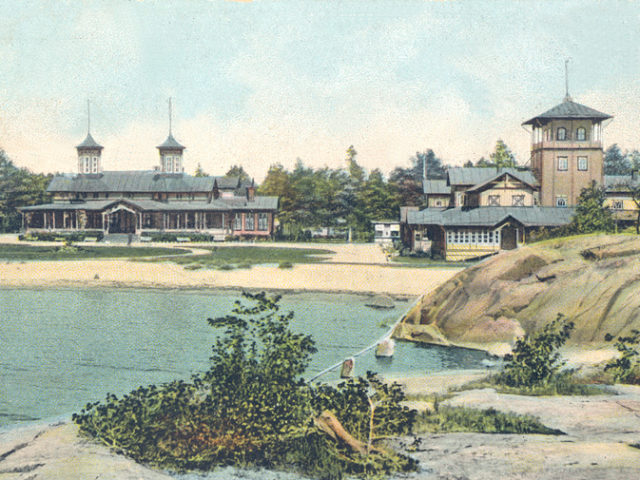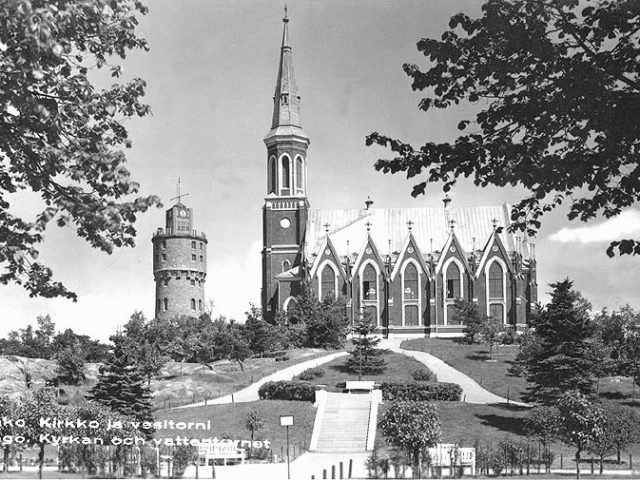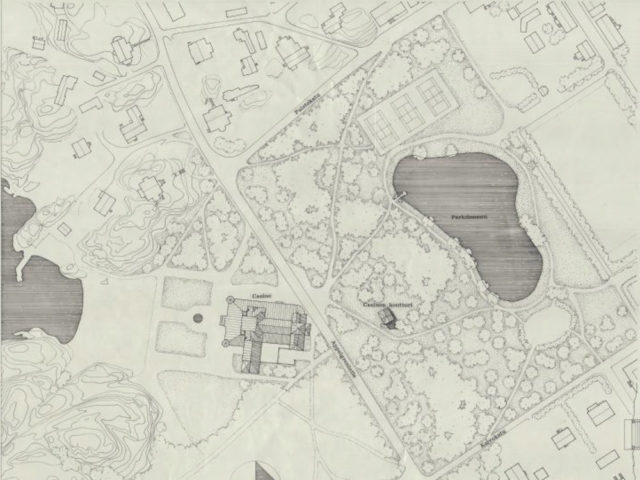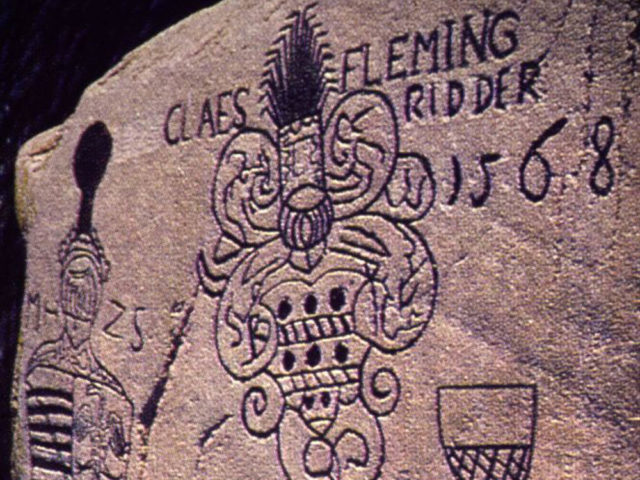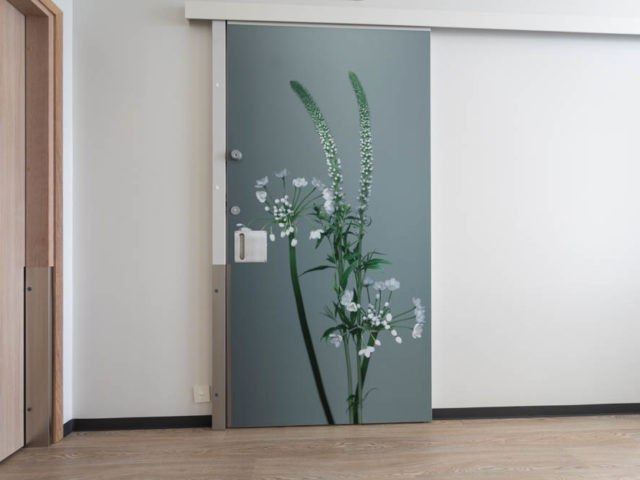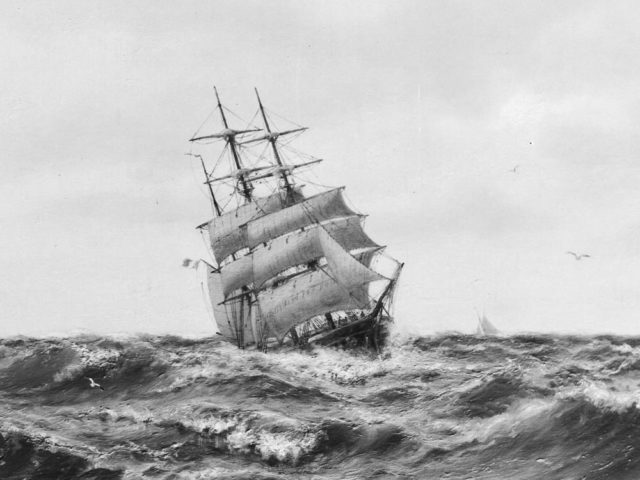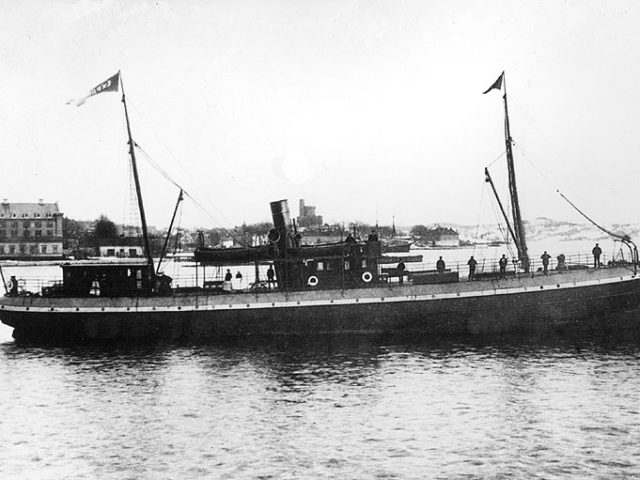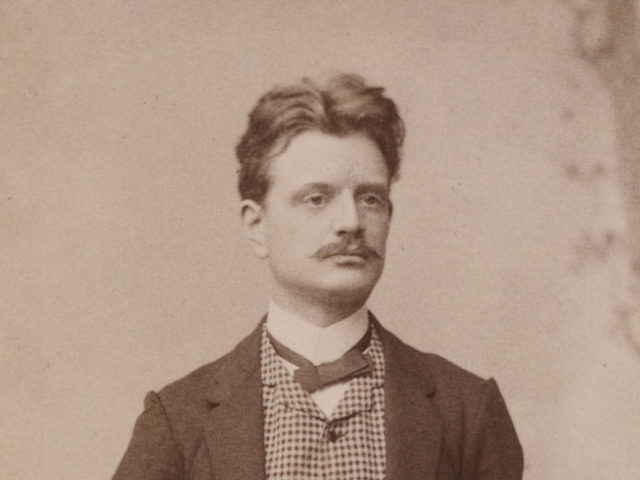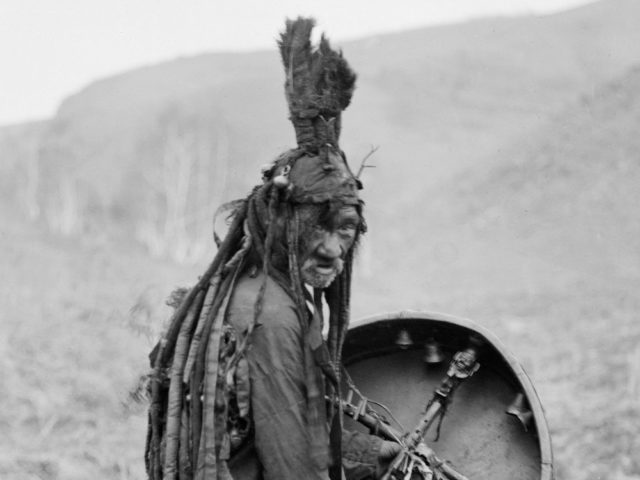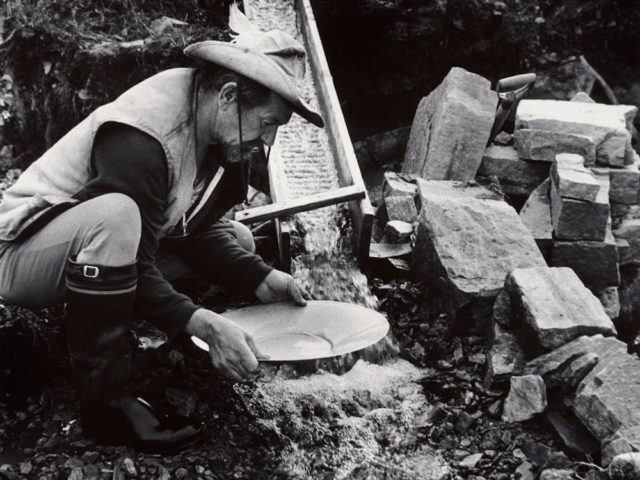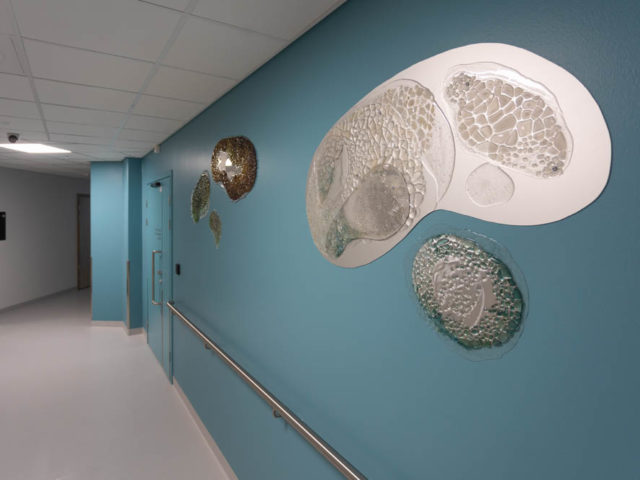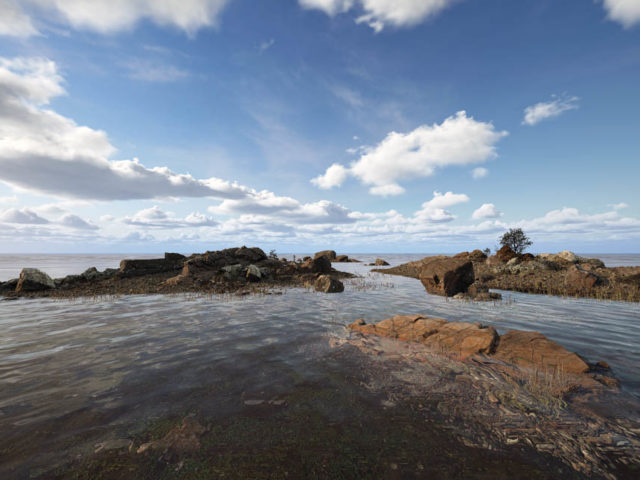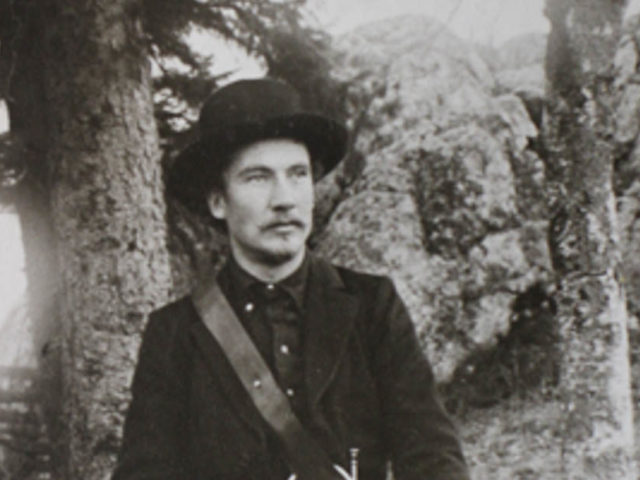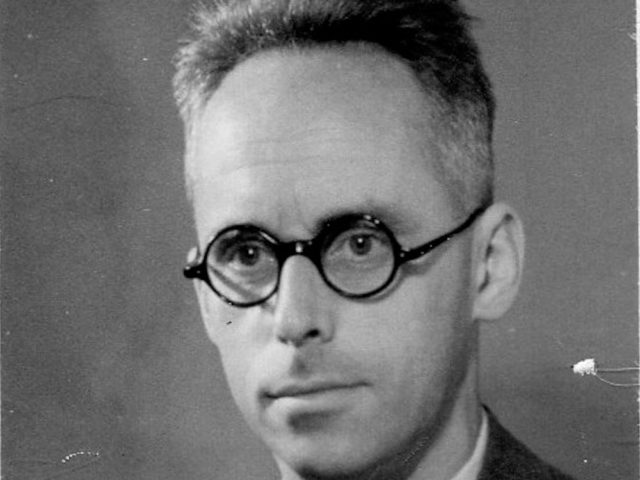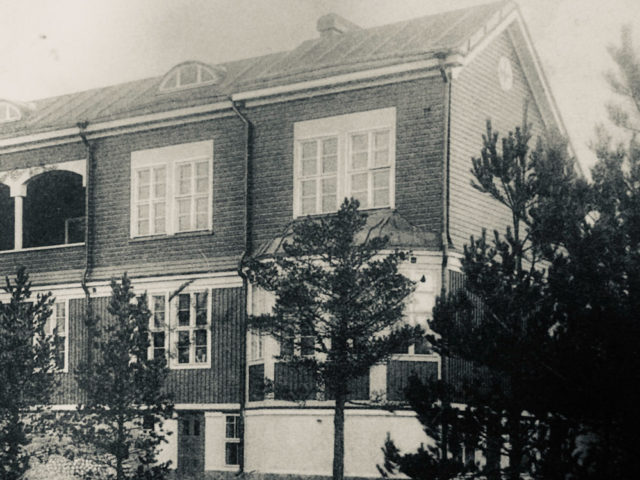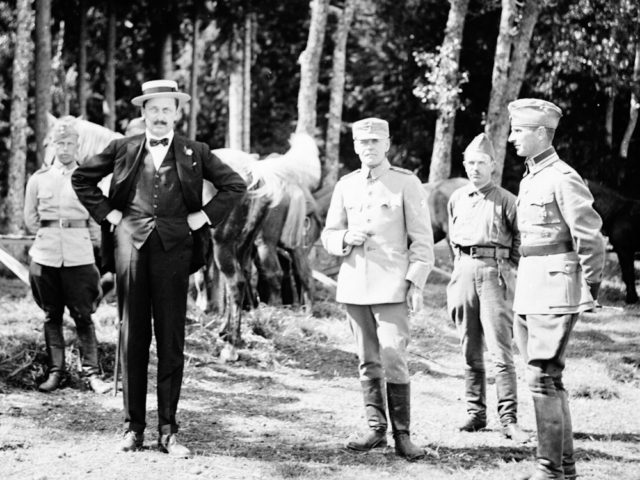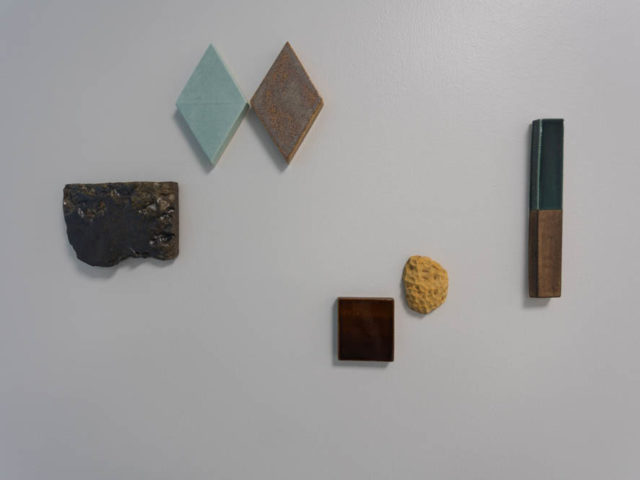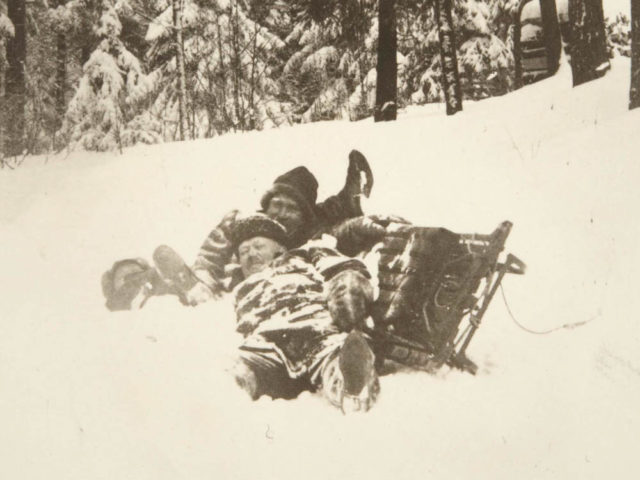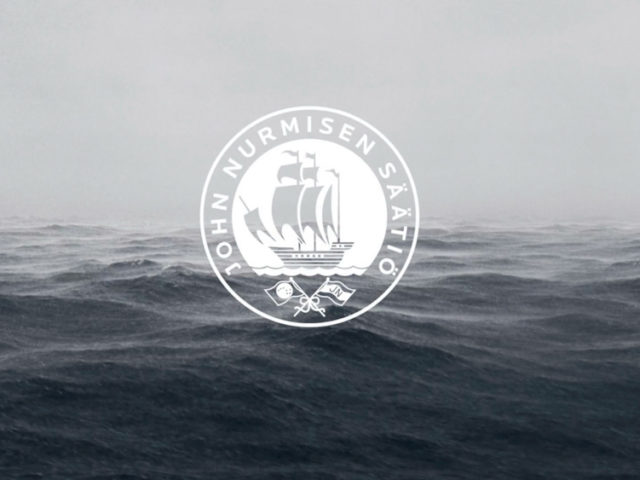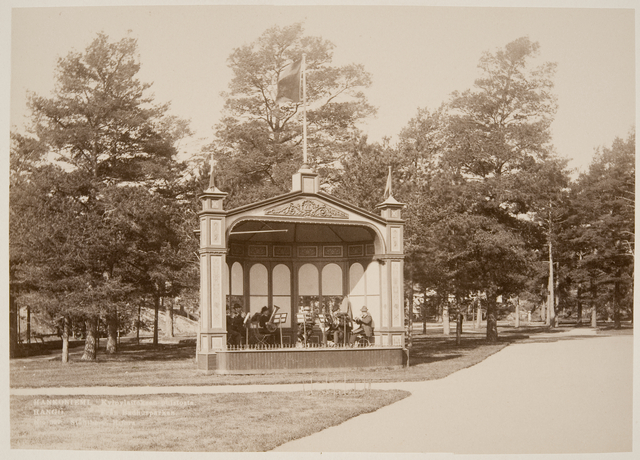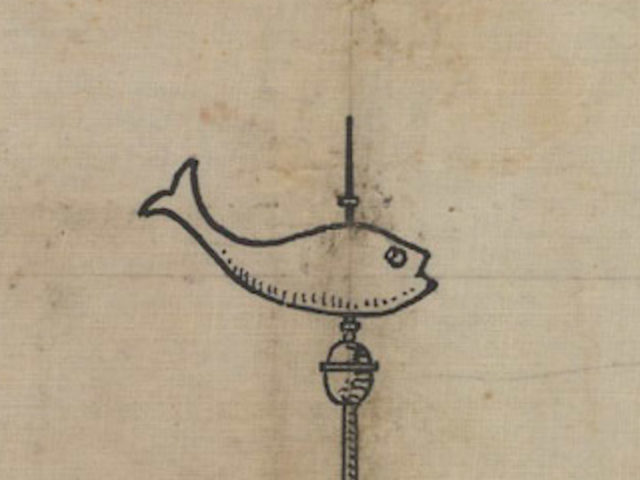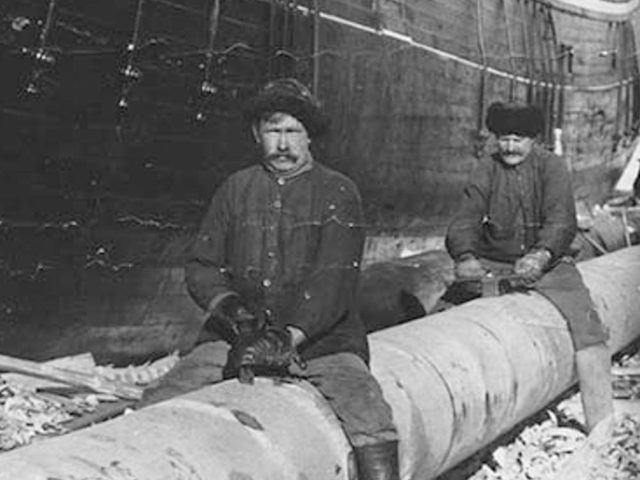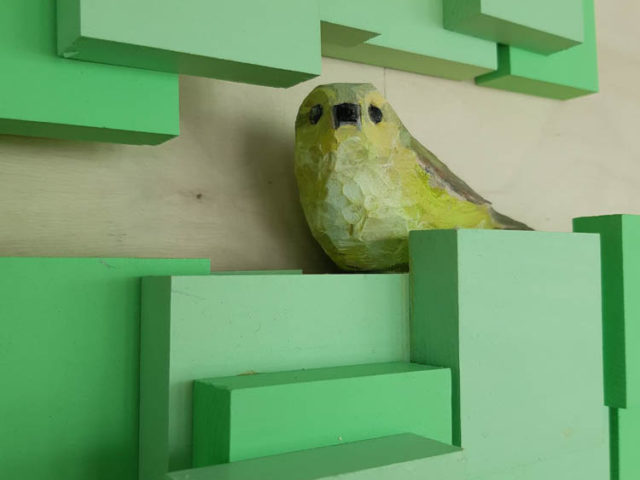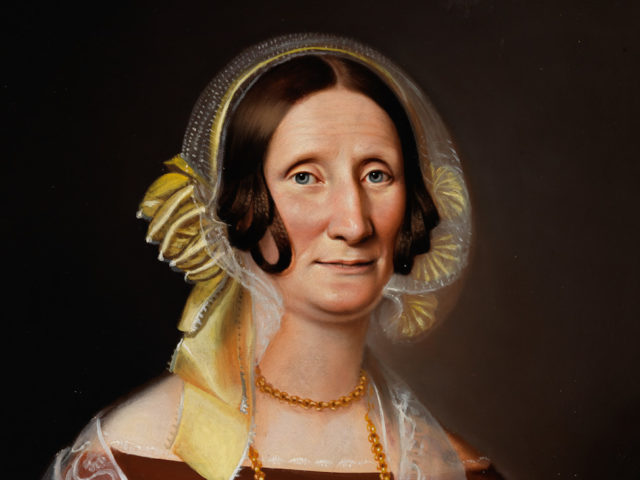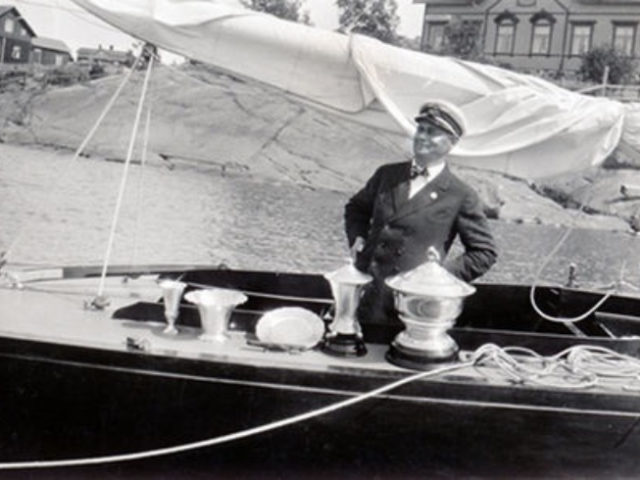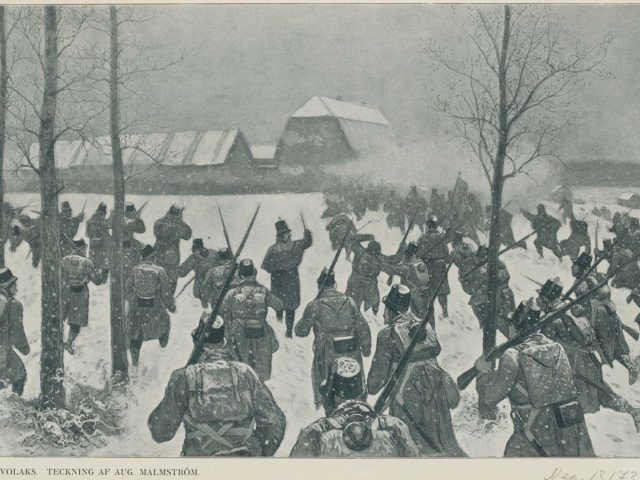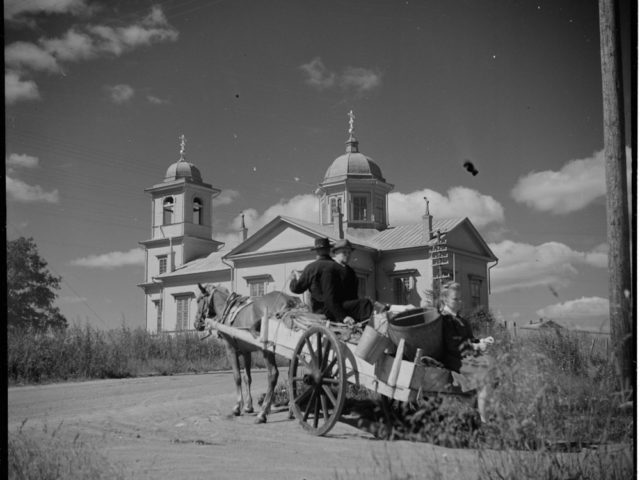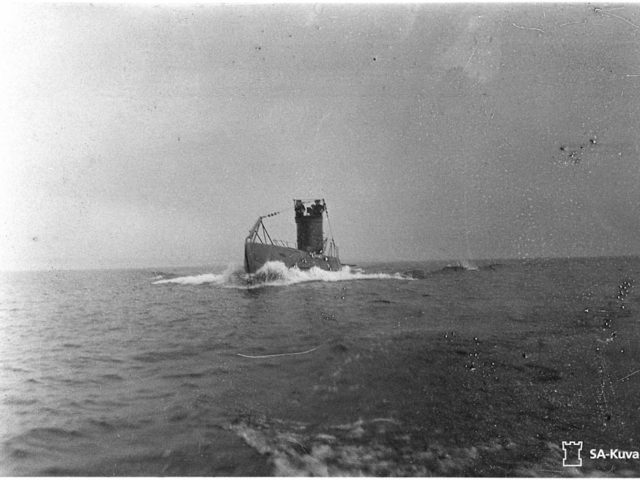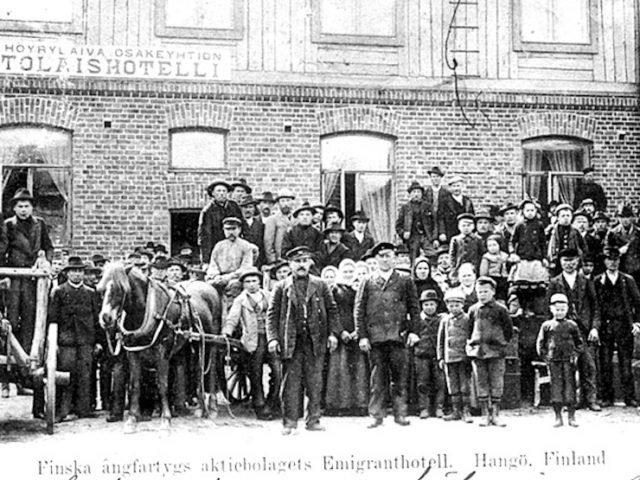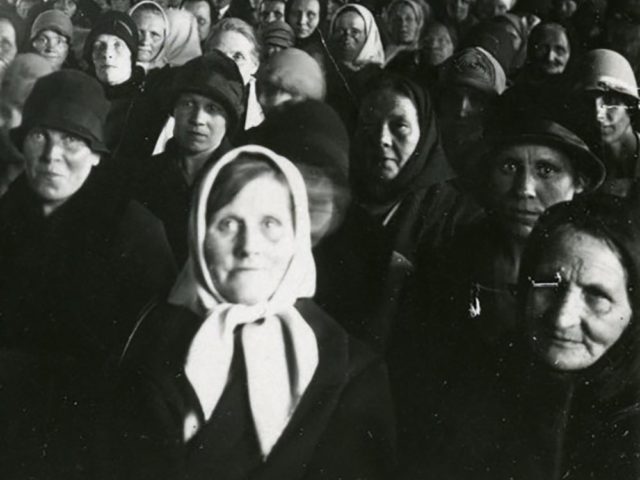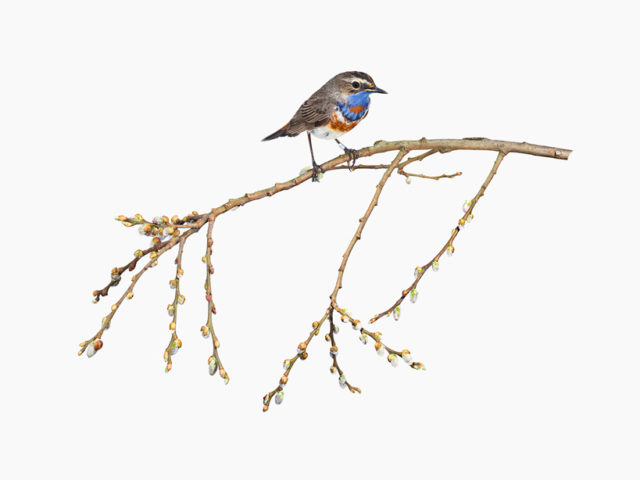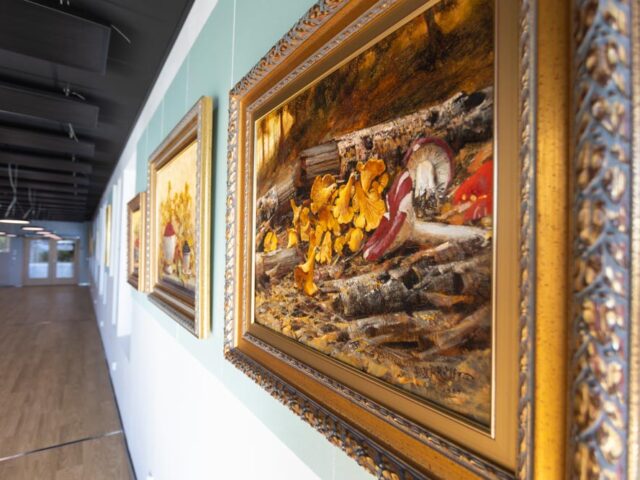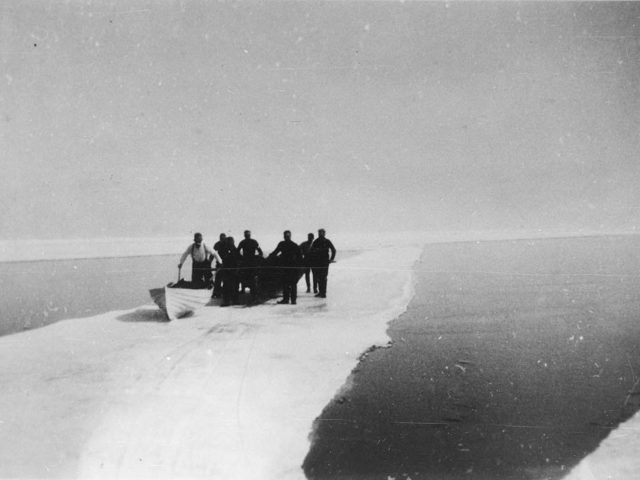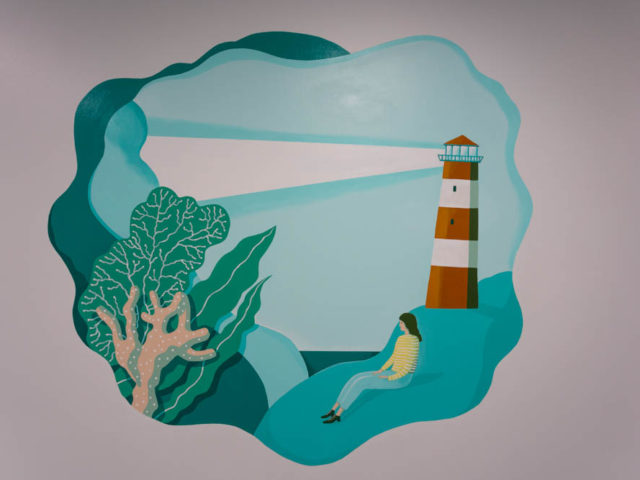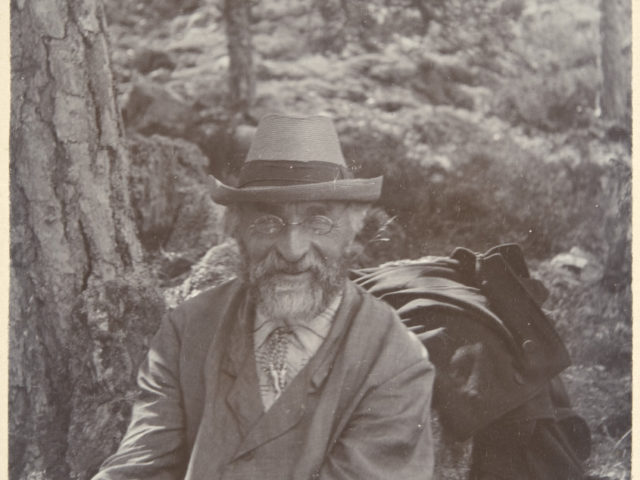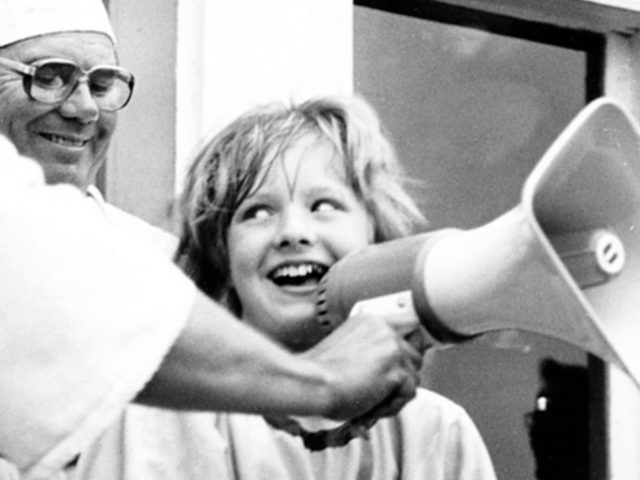Tarinoita historiasta nykypäivään
Täältä löydät mielenkiintoisia ja viihdyttäviä tarinoita eri puolilta Suomea. Tutustu Lemmenjoen kullankaivajiin, 1700-luvun lopun Ouluun, Vaasan sairaalan taidekokoelmaan tai Hangon entisajan kylpyläelämään
Voit etsiä tarinoita hakusanojen, kartan tai teemojen mukaan. Sisältöjä on elävöitetty kuvilla, äänikerronnalla ja videoilla.
Hyvää matkaa tarinoiden parissa!
RECOMMENDATIONS
Three nautical miles from the tip of the park cliffs to the east is Sandskär Island. On the quiet summer days of the mid-1920s, the voice of the famous singer Helge Lindberg was far from there. During the summer, he rehearsed 8 concert programs on his own island and gave another hundred concerts across Europe each year. The family's actual hometown was Vienna.
View more
Thalatta! Thalatta! Greek warriors shouted for joy this word for the sea 400 years before the end of time. The poorly run military expedition turned into a relief when they saw the homely shores of the Black Sea. A couple of thousand years later, even in Hanko you can shout for joy Thalatta! Then you will say hello to a wonderful wooden villa on the southern slope of Vartiovuori right by the sea.
View more
On the dark and rainy evening of October 1957, the motor ship Asa Finn, which was sailing in coal cargo, got lost on the fairway west of Hanko and crashed into the rocks. The mainings of the passing ships rocked the ship and Asa Finn began to fill with water. Captain August Route drove the ship to the nearest shoal where it sank between Lilla and Södra Klippingen. Asa Finn was just one of the names of the ship. During the Prohibition Act, the ship chartered relief for the thirsty from the southern neighbor and it was known by the nickname Pirtu-Veera. The ship was built in 1918 in Norköping, Sweden and was baptized in Wera.
View more
Kuvanveistäjä Paula Blåfieldin keraaminen veistoskokonaisuus Vaasan keskussairaalan H-rakennuksessa kuvaa merenkurkun fladojen ja kluuvien rikasta vedenalaista maailmaa. Erilaiset vedenalaiset kasvustot loistavat auringon valaistessa niitä veden läpi.
View more
Hangon museo perustettiin jo vuonna 1907 vaikka alkutaival oli hieman kangerteleva. Tammisaareen oli perustettu oma museo 1906, joten pitihän myös Hankoon saada sellainen. 1900-luvun alku oli muutenkin vilkasta aikaa museokentällä Suomessa. Tärkeätä oli nostaa esille Suomen erillispiirteet vuosisadan alun venäläistämisyritysten keskellä. Museo aloitti toimintansa Fohlinin tuvassa Korkeavuorenkadulla.
View more
Suomen Matkailuyhdistys kehotti suomalaisia vuonna 1924 näkötornien rakentamiseen luonnonkauniille seuduille. Lounais-Hämeen vaikuttajat ryhtyivät tuumasta toimeen. Tammelan Kaukolanharjun näkötornin avajaisia juhlittiin heinäkuussa 1926. Juhlapuheissa näkötornin toivottiin kehittävän niin kauneusaisteja kuin jalostavan sisäistä ihmistämmekin sekä opettavan kunnioittamaan Jumalaa, rakastamaan lähimmäistä ja kotiseutua sekä koko isänmaata. Näkötornista avautuva maisema innoitti ainakin taiteilija Albert Edefeltiä, joka maalasi yhden tunnetuimmista suomalaisista maisemamaalauksista “Kaukolanharju auringonlaskun aikaan”.
View more
THE STORIES
The ghost at the tomb of the story has been considered partly autobiographical: like Sara Wacklin, a poor girl who has lost her father collects crumbs of information from here and there, “like a blind chicken,” and manages to feed her mother and teacher with earnings. The story is from Sara Wacklin's book "Hundrade minnen från Österbotten" from 1844.
View more
Wivi Lönn (1872–1966) oli tuottelias arkkitehti, jonka suunnittelemia rakennuksia löytyy mm. Helsingistä, Tampereelta ja Jyväskylästä. Hän johti omaa arkkitehtitoimistoa, ensimmäisenä naisena Suomessa, ja suunnittele mm. useita koulurakennuksia. Esimerkiksi Edvin Laineen koulun puuosan hän suunnitteli Iisalmeen 1900-luvun alussa.
View more
Billnäs is part of the historic ironworks area of southwestern Finland and is the third oldest in Finland, Rautaruukki. Billnäs Ruukki was founded in 1641 by Carl Billsten with the permission of the Swedish krona. The historic Kuninkaantie runs through Ruukki's Mustionjoki River and the other bank of the river. In the heart of the ironworks area, industrial activity largely ceased in the 1980s. Today, the area is owned by Billnäsin Ruukki Oy. The company is developing the area into a center for tourism, events and teleworking, respecting history.
View more
Sculptors Pekka and Teija Isorättyä's sculpture Exuvia in the H building of Vaasa Central Hospital shows the Okatytönkorento, whose habitat is the bays of seas and lakes. The Isorättyät got the idea for the piece while sailing in the waters of Merenkurku on a hot summer morning. Around the boat flew a large group of turquoise-blue Okatytön dragonflies, just like at a fairy prom.
View more
Frans Mikael Franzén (February 9, 1772 Oulu - August 14, 1847 near Härnösand, Sweden) was a Finnish poet, clergyman, bishop of Härnösand, professor and academician.
View more
Hanko's town hall was completed in September 1926. The designers of the building were Armas Lindgren and Bertel Liljequist. The activity in the town hall was lively. There were concerts, plays, dance performances and lectures. Of course, the entire city administration was also in the building. In 1941, the Continuation War began, and Russian troops blew up the town hall when they retreated from the city in December. The current town hall was completed in 1951.
View more
Hangon museo perustettiin jo vuonna 1907 vaikka alkutaival oli hieman kangerteleva. Tammisaareen oli perustettu oma museo 1906, joten pitihän myös Hankoon saada sellainen. 1900-luvun alku oli muutenkin vilkasta aikaa museokentällä Suomessa. Tärkeätä oli nostaa esille Suomen erillispiirteet vuosisadan alun venäläistämisyritysten keskellä. Museo aloitti toimintansa Fohlinin tuvassa Korkeavuorenkadulla.
View more
Hangon sataman vanhin säilynyt nosturi otettiin käyttöön heinäkuussa 1911. Ransomes & Rapier Ltd Lontoossa toimitti osat ja insinööritoimisto Zitting & co Helsingistä kasasi sen. Nosturi on peruskorjattu vuonna 2020.
View more
A spa was established in Hanko in the late 1870s. The celebrities and royals of their time were cared for by sister-in-law. Here is the story of sister Edla Helin.
View more
In Hanko, the strongest appeals for clean water - against communicable diseases - were heard from the medical community, with Wilhelm Snellman as the loudest in 1889 and Sam Chydenius in 1897–1917. The sewerage and water supply system gradually developed, and finally in 1910 the design of the Hanko water tower began. The same architect Waldemar Aspel, who had just drawn the extensions of the spa and casino, was invited to the task.
View more
Hanko parks are great places to walk all year round. The first actual parks appear in the town plan from 1900, when the Town Hall Park, Vartiovuorenpuisto, Spa Park, Railway Park and the current Haagapuisto existed or are planned.
View more
Where in Hanko or in Finland can you see the names of so many famous people as in Hauensuo? In the 16th and 17th centuries, sailors have left their mark on the rocks of this natural harbor, waiting for better winds. There are more than 600 carvings here, either as names or family coats of arms. Listen to Hauensuoli - the story of Hanko's guestbook. Hauensole became a natural harbor in the 15th century when…
View more
Photographic artist Sandra Kantanen's collection Herbarium presents familiar and exotic plants with microscopic precision. The plants photographed with the scanner are printed in a large size so that even the smallest details of the plants stand out. The almost unnatural precision reveals something about the structure of nature.
View more
Before telephones and satellites, messages were transmitted loosely and on many roads. If nothing was heard, what was thought or feared to be true was read. The story is from Sara Wacklin's book "Hundrade minnen från Österbotten" from 1844.
View more
The steamship Express has a legendary place in Finnish history. The Express was built at Oskarshamn Shipyard in Sweden in 1877, and the ship was ordered by the Finnish company Finska Transito Ångbåts. It was 42.4 m long, 6.9 m wide and 3.5 m deep, with a top speed of 10.7 knots on a 400-horsepower engine. In open water, the journey from Hanko to Stockholm took 17 hours.
View more
Sibelius went both sailing and to the spa in Hanko, but in the summer of 1902 he spent more than a month here in Tvärminne. The only wife was pregnant and depressed. Jean wanted to get to a quieter place. He lived in Södergård, where Sakari Topelius, Hjalmar Munsterhjelm and Juhani Aho had previously spent summers.
View more
In the beginning there was curiosity, knowledge was gained by experimentation, and the sciences sprouted from the grains of knowledge. In the following story, science and superstition take on each other. The story is from Sara Wacklin's book "Hundrade minnen från Österbotten" from 1844.
View more
The landscapes of Kaukolanharju have inspired both local and visiting artists. The landscape has been immortalized by, for example, Magnus von Wright, Robert Wilhelm Ekman and, most famously, Albert Edelfelt.
View more
Suomen Matkailuyhdistys kehotti suomalaisia vuonna 1924 näkötornien rakentamiseen luonnonkauniille seuduille. Lounais-Hämeen vaikuttajat ryhtyivät tuumasta toimeen. Tammelan Kaukolanharjun näkötornin avajaisia juhlittiin heinäkuussa 1926. Juhlapuheissa näkötornin toivottiin kehittävän niin kauneusaisteja kuin jalostavan sisäistä ihmistämmekin sekä opettavan kunnioittamaan Jumalaa, rakastamaan lähimmäistä ja kotiseutua sekä koko isänmaata. Näkötornista avautuva maisema innoitti ainakin taiteilija Albert Edefeltiä, joka maalasi yhden tunnetuimmista suomalaisista maisemamaalauksista “Kaukolanharju auringonlaskun aikaan”.
View more
In Lapland, Finland, the Inari and Sodankylä areas were Europe's only topsoil Gold Fields, where gold leaching has been economically viable. There have been several gold miners in the Lemmenjoki area. Some of them were professionals using machines but for many gold mining was a way of life. Gold digger Jaakko Kangasniemi surveys the Lemmenjoki gold rush in an interview with journalist Seppo J. Partanen.
View more
Visual artist Janna Syvänoja's artwork for the H-building of the Vaasa Central Hospital consists of the works Lagoons, Maa kohoaa and Kaisliko. Syvänoja has collected the materials for the works from the beaches. For him, the material itself is an important substantive and visual starting point for the works. The original materials, familiar to everyone, remain in the works themselves, reminding of their past.
View more
Geir Byrkjelandin "Landet andas" animaatio käsittelee Vaasan ainutlaatuista saaristoa. Teos sijaitsee Vaasan keskussairaalan H-rakennuksessa. Vaasan alueella on yksi harvoista geologisista ilmiöistä, jonka voi kokea ja nähdä ihmisen elinajan aikana. Kyse on maankohoamisesta ja viimeisen jääkauden jäänteistä.
View more
Three nautical miles from the tip of the park cliffs to the east is Sandskär Island. On the quiet summer days of the mid-1920s, the voice of the famous singer Helge Lindberg was far from there. During the summer, he rehearsed 8 concert programs on his own island and gave another hundred concerts across Europe each year. The family's actual hometown was Vienna.
View more
Friendship is gold, but what happened in Oulu when the unbreakable trust and playfulness of the two teachers shook hands? The story is from Sara Wacklin's book "Hundrade minnen från Österbotten" from 1844.
View more
Four days before Germany conquered Tallinn on August 28, 1941, an Estonian lawyer and father of two small children, 36-year-old Leonid Tretjakevich (later Trett), boarded the Örne ship in Tallinn among 600 other Estonian men. There were no alternatives, for refusing to call the Red Army knew the death penalty. Leonid was stationed as an assistant to the artillery station on the West Bank of Hanko, in Varisniemi at Kappelisatama.
View more
Ljungbo Sanatorium was built by Viva Lagerborg, one of Finland's first gynecologists. The building was designed by his cousin Signe Lagerborg-Stenius. Anna Wichmann bought and saved the building in 2020. The villa is now in private use.
View more
Photographic artist Santeri Tuori's two-part artwork Lumpeet is located in the Tyyssija building of Turku's student village. Water lilies and water plants are depicted in the work. The video-controlled LED light network that lights up in the evenings brings new layers to the work.
View more
Carl Gustaf Emil Mannerheim (1867 - 1951) was a Finnish military leader and statesman. Mannerheim became the national hero of the Finns at the beginning of our independence. In 1919, Mannerheim moved his church book to Hanko, and in the winter of 1920, he rented a villa on the Great Mäntysaari, which was named Stormhälla, Storm Rock.
View more
Ceramic artist Laura Pehkonen's body of work Merle is an abstract ceramic wall relief to be seen and touched. 4.-6. of the H building of the Vaasa Central Hospital. the work placed on the corridor walls of the floors is a collage-like whole consisting of many parts, the material of which is handmade unique ceramic pieces.
View more
Definition of content? Relentlessness in the face of adversity, serenity in the face of suffering. The story of the remarkable descent is from Sara Wacklin's book “Hundrade minnen från Österbotten” from 1844.
View more
The Sea of Memories is a cultural project of the John Nurminen Foundation on Finnish memories related to the sea. The aim of the Sea of Memories project is to open up perspectives on people's images and beliefs about the sea and to activate Finns to think about their relationship with the Baltic Sea.
View more
The first music pavilion in Hanko Spa Park was built in 1890. It was like a large speaker with dance and operetta melodies.
View more
Tinsmith Einar Sandberg did many great jobs in Hanko. Among other things, he renewed the roofs of the church and powerhouse along with his sons after the war. He also made a large, 3-meter weather vane for the water tower that looks like a fish. Unfortunately, Einar suffered a cerebral hemorrhage while working on the roof of Lundell’s general store on the Esplanade. At that time he was already 80 years old and still involved in working life!
View more
All strata of the people took part in the old-time celebrations. The story is from Sara Wacklin's book "Hundrade minnen från Österbotten" from 1844.
View more
On the dark and rainy evening of October 1957, the motor ship Asa Finn, which was sailing in coal cargo, got lost on the fairway west of Hanko and crashed into the rocks. The mainings of the passing ships rocked the ship and Asa Finn began to fill with water. Captain August Route drove the ship to the nearest shoal where it sank between Lilla and Södra Klippingen. Asa Finn was just one of the names of the ship. During the Prohibition Act, the ship chartered relief for the thirsty from the southern neighbor and it was known by the nickname Pirtu-Veera. The ship was built in 1918 in Norköping, Sweden and was baptized in Wera.
View more
Kuvanveistäjä Kim Jotunin Vaasan keskussairaalan H-rakennukseen toteuttama teos "Puu" on tehty mäntyliimapuulevystä, maalatuista mäntyisistä neliöistä sekä taustana toimivasta koivuvanerista. Jotuni halusi toteuttaa sairaalaan puusta tehdyn teoksen materiaalin ekologisuuden takia ja koska materiaali ja teema kulkevat teoksessa käsi kädessä.
View more
The Nazi-German transit camp was located in the Customs Name of Hanko. It was intended for 3,000 soldiers, but there were constantly 4,000, sometimes up to 5,000, soldiers. Hanko's advantage was a short sea voyage to the German-occupied Baltic ports of Tallinn and Liepaja and to Danzig, Poland. Hanko was also a good winter port, so troops could be transported all year round.
View more
Sara Elisabeth Wacklin (May 26, 1790 in Oulu - January 28, 1846 in Stockholm) was an Oulu-born writer and pioneer in women's education. She was one of Finland's first female writers.
View more
Henrik Ramsay (1886–1951) was a major influence on the economy and a statesman but above all a passionate sailor.
View more
Are there more opposing professions than military and medical? What if a soldier starts advising a pharmacist on the treatment of his wounds? Self-help in Finnish. The story is from Sara Wacklin's book "Hundrade minnen från Österbotten" from 1844.
View more
The Orthodox Church of St. Nicholas of the Estuary is located in surrendered Karelia. It was the main church of the former Suistamo Orthodox parish. The church was inaugurated on May 17, 1844, and has been designed by Carl Ludvig Engel.
View more
The watershed is a submarine launched on 10.5. 1933 in Turku. Until 1936, the boat was only named CV 707. The Dutch engineering firm Ingenieurskantoor voor Scheepsbouw had ordered the vessel in October 1930 as a prototype commercial submarine. The Finnish state bought it in 1936, and it was named Vesikko.
View more
Hanko was the most important departure city for emigrants at the turn of the 19th and 20th centuries. About 250,000 Finns left in search of a new life through the port of Hanko. Accommodation capacity has always been a problem in Hanko, and at the beginning of the 20th century there were especially many immigrants in Hanko who stayed here for a night or two before continuing their journey through England to the United States. Suomen Höyrylaivahtiö, which was responsible for the emigrants' journey from Finland, decided to build an emigrant hotel on the Boulevard in 1902.
View more
Life depends on the hair. How does a person act when a safety net fails? Where does he seek protection? What about explanations for surprising things? The story of the great thunderstorm in 1793. The story is from Sara Wacklin's book “Hundrade minnen från Österbotten” from 1844.
View more
Sanna Kannisto became known in the early 2000s for her works depicting plants and animals in the rainforests. Since then, an interest in bird photography has taken him to the Italian island of Ponza and Russia’s Baikal. In immortalizing birds, Kannisto collaborates with scientists and ringers. In recent years, he has focused on filming in Hanko. Kannisto is a romantic hiker who picks up things of interest to him from the point of view of natural research, utilizing them in making pictures.
View more
Pekka Lindin taidekokoelman esittely | Minulla ei ole omaa taiteellista lahjakkuutta. Tuskin osaisin piirtää edes tikku-ukkoa. Taiteellisen elämäni suurin saavutus on tapahtunut pikkupoikana tunnetussa suomalaisessa kansannäytelmässä, jossa minun piti piirtää Muttisen Aapelin seinälautaan "hämähäkin kuva"! Sekin vaati paljon opastusta isompien poikien taholta. En vielä tänäänkään tiedä, miten onnistuin, koska yleisö vain remahti nauramaan hiilellä piirtämälleni kuvalle. Minun oli varmasti parasta siirtyä taiteen tekemisestä ostajapuolelle.
View more
Of all the means of crossing the river, the rarest is probably the winter bridge. The story is from Sara Wacklin's book "Hundrade minnen från Österbotten" from 1844.
View more
Artist Terhi Ekebom's work series Turquoise flow in the H building of the Vaasa Central Hospital contains eight sea-themed wall paintings. The series depicts water as a gentle and supportive, turquoise resting place, which is nevertheless in motion. The movement directions of the flow follow the movement of the hospital users in the space.
View more
The zoological station in Tvärminne was founded by zoology professor Johan Axel Palmén in 1902. His goal was to establish a marine field station in an area with a diverse environment and thus good opportunities for research. After his death, the position was transferred to the University of Helsinki as a testamentary donation in 1919.
View more
Poppy Day is celebrated every year on July 27th. It has been celebrated in Hanko since the early days of spa culture, in the late 19th century. Here you can find more information about the history of Poppy Day in Hanko.
View more

